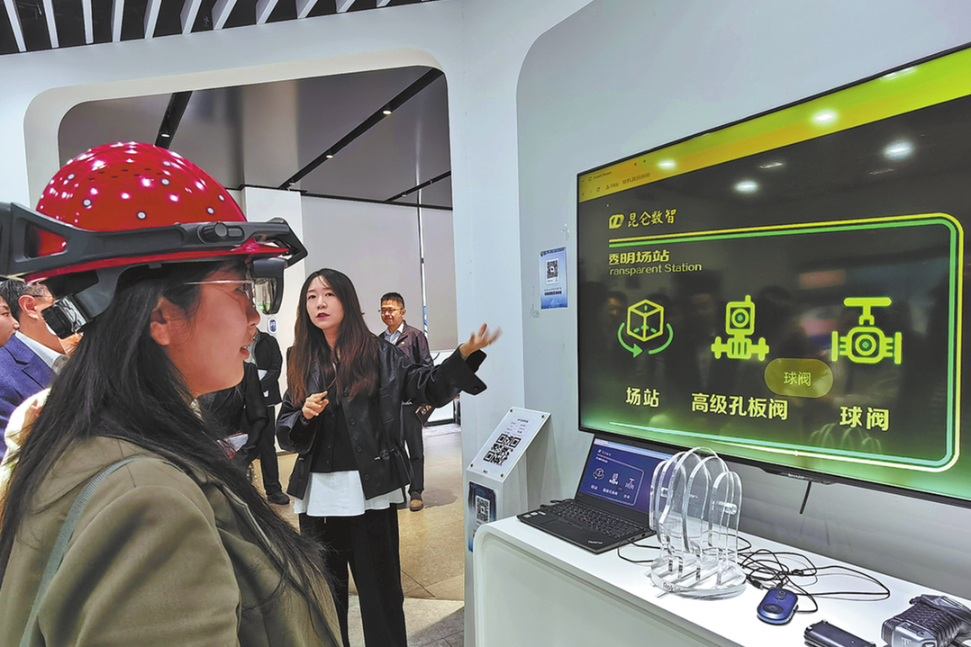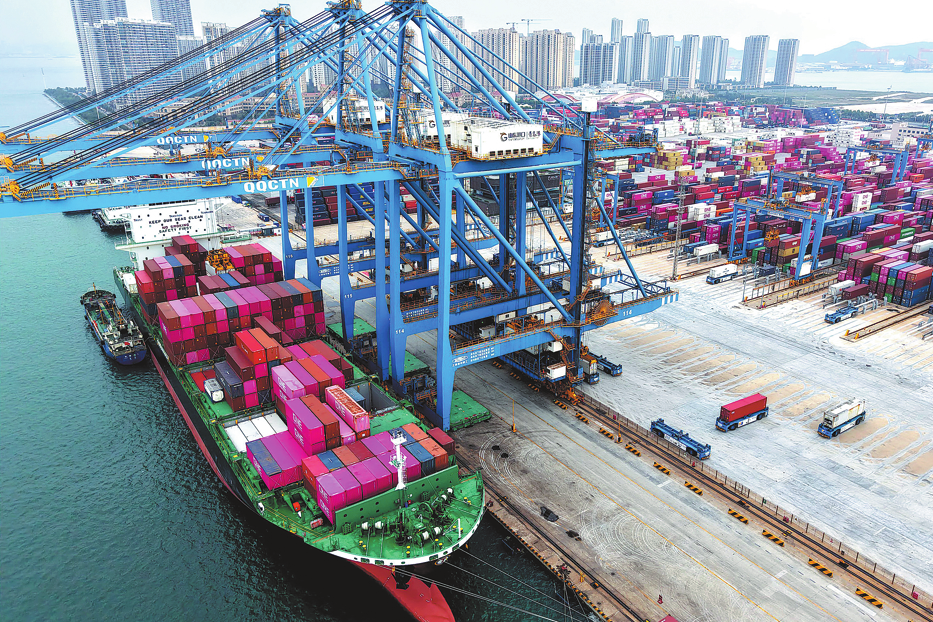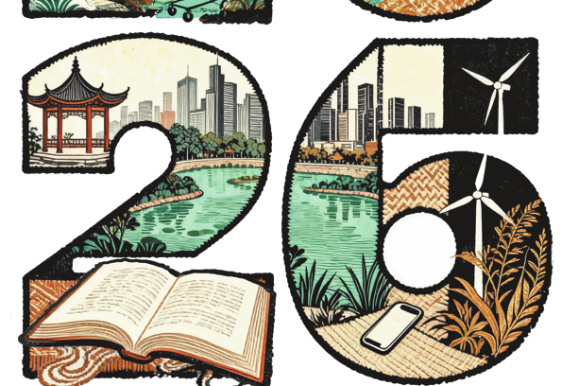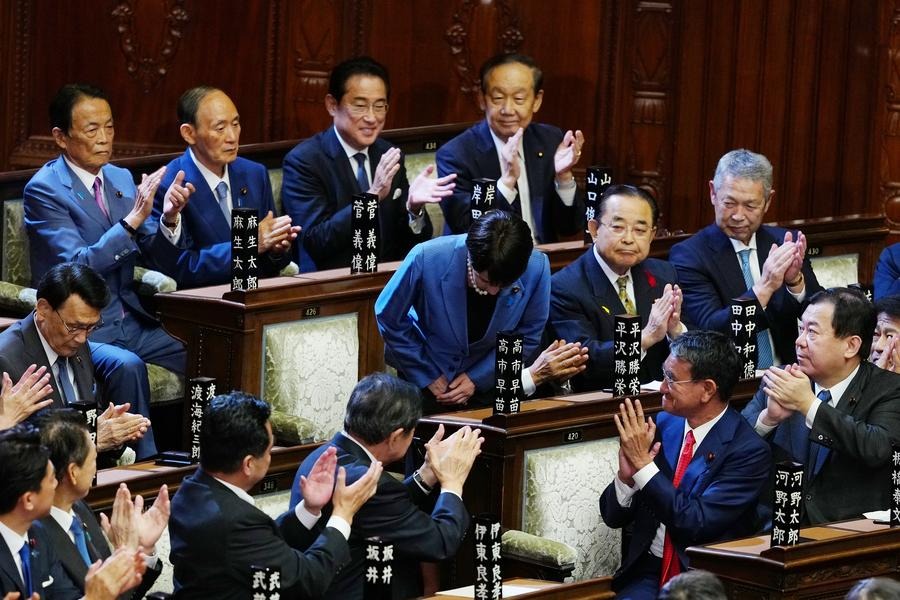Gateway to the future


Revitalized Belt and Road Initiative is helping to propel Malaysia's transformation into a high-tech nation
The Belt and Road Initiative has catalyzed socioeconomic development in Malaysia and the broader region. As the BRI embarks on its second decade, expectations are high that it will continue to facilitate the transition of the developing world toward more sustainable growth and enable it to embrace the opportunities presented by the Fourth Industrial Revolution.
In 1974, Chairman Mao Zedong and then Malaysian prime minister Tun Abdul Razak convened in Beijing to establish diplomatic relations between China and Malaysia. This year commemorates the 50th anniversary of that historic event. Half a century later, the bond between the two countries has never been stronger.
In 2023, Malaysian Prime Minister Anwar Ibrahim made two visits to China, emphasizing the significant importance he places on fostering a strong relationship between the two countries. Among various agreements, Prime Minister Anwar and Chinese President Xi Jinping committed to cultivating trust between the world's diverse cultures through the Global Civilization Initiative.
Economic cooperation has always been the cornerstone of the China-Malaysia relationship. Over the past decade, the BRI has emerged as a pivotal catalyst, further driving and shaping this robust economic collaboration between the two nations. In 2022, China-Malaysia trade reached $203.59 billion, up 15.3 percent year-on-year. China has been the largest trading partner of Malaysia for 15 consecutive years since 2009, accounting for 17.1 percent of Malaysia's total external trade in 2023.
The BRI carries unique historic significance for the China-Malaysia relationship. The maritime route retraces the 15th century voyages of Admiral Zheng He, who made notable stopovers in the Sultanate of Melaka. These visits during the Ming Dynasty (1368-1644) laid the foundation for the initial diplomatic and civilization ties between ancient China and the Malay world. Naturally, the BRI today serves as a rekindling of an old friendship established some 600 years ago.
Over the past decade, China has invested in a diverse array of projects in Malaysia through the BRI, including the East Coast Railway Link, the Malaysia-China Kuantan Industrial Park, the Trans-Sabah Gas Pipeline and various others.
These initiatives have generated significant development and transformed Malaysia's social and economic landscape. However, the COVID-19 pandemic caused disruptions to the progress of the BRI in Malaysia, as it did elsewhere.
Great power rivalry and geopolitical tension have also posed challenges, with trade tariffs and sanctions disrupting supply chains and undermining economic growth. Malaysia, along with the Association of Southeast Asian Nations in general, remains committed to a policy of open and free trade, actively engaging with China and all other relevant stakeholders dedicated to fostering the common good.
In fact, since its inception, the BRI has evolved beyond the conventional infrastructure focus, expanding into diverse sub-initiatives such as the Health Silk Road, the Green Silk Road, and the Digital Silk Road.
The Health Silk Road, for instance, has become part of the BRI framework in Malaysia. During the COVID-19 pandemic, China's assistance in supplying vaccines not only aided Malaysia in managing the crisis, but also facilitated the development of China's own vaccine capabilities. Subsequently, China has committed to supporting Malaysia's vaccine research and production, reflecting a collaborative effort aligned with the Health Silk Road's goal of enhancing global public health.
In recent years, China has emerged as a trailblazer in renewable energy and green manufacturing. Through the framework of the Green Silk Road, it strategically positions itself at the vanguard of the global green technological revolution, benefiting developing countries such as Malaysia. Beyond solar panels and electric vehicles, Chinese-manufactured hydrogen buses are playing a pivotal role in Malaysia's ongoing transition to renewable energy.
China's remarkable transformation into a technological powerhouse has given rise to another new subdivision, namely, the Digital Silk Road. This initiative is expected to assist Malaysia and other nations in embracing the digital age. For example, Huawei is anticipated to launch Malaysia's second 5G network, contributing significantly to the country's technological progress. Moreover, Alibaba has selected Malaysia as its regional e-commerce hub and has entered into an agreement to transform Kuala Lumpur into the first "smart city" outside of China using Alibaba technology.
In 2023, while visiting the China-ASEAN Expo in Nanning, the Guangxi Zhuang autonomous region, Prime Minister Anwar secured China's renewed commitment to support Putrajaya's New Industrial Master Plan 2030. This plan is expected to harness the Digital Silk Road to propel Malaysia into a high-tech nation.
As the China-Malaysia relationship celebrates its 50th anniversary, the two countries are expected to enter into a new era of closer people-to-people bonds and enhanced economic cooperation, driven by a revitalized BRI.
Indeed, as it embarks on its second decade, the BRI has evolved into "a road of science and technology" that places innovation high on the agenda, ready to expedite the transition of the developing world, including Malaysia, into the digital age and a future defined by technological possibilities.
The author is a research associate at the Institute of China Studies at the University of Malaya. The author contributed this article to China Watch, a think tank powered by China Daily.
The views do not necessarily reflect those of China Daily
Contact the editor at editor@chinawatch.cn.

































